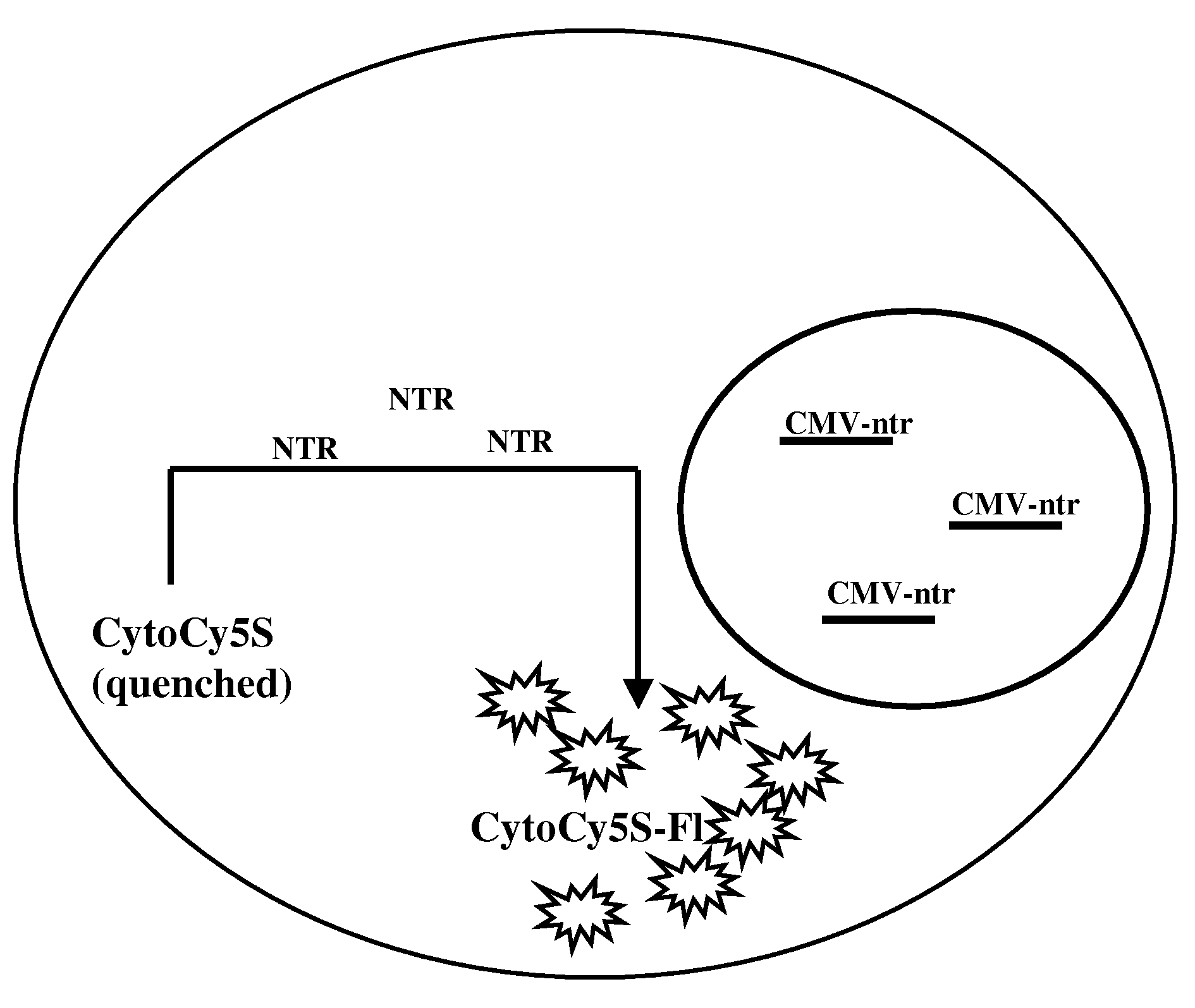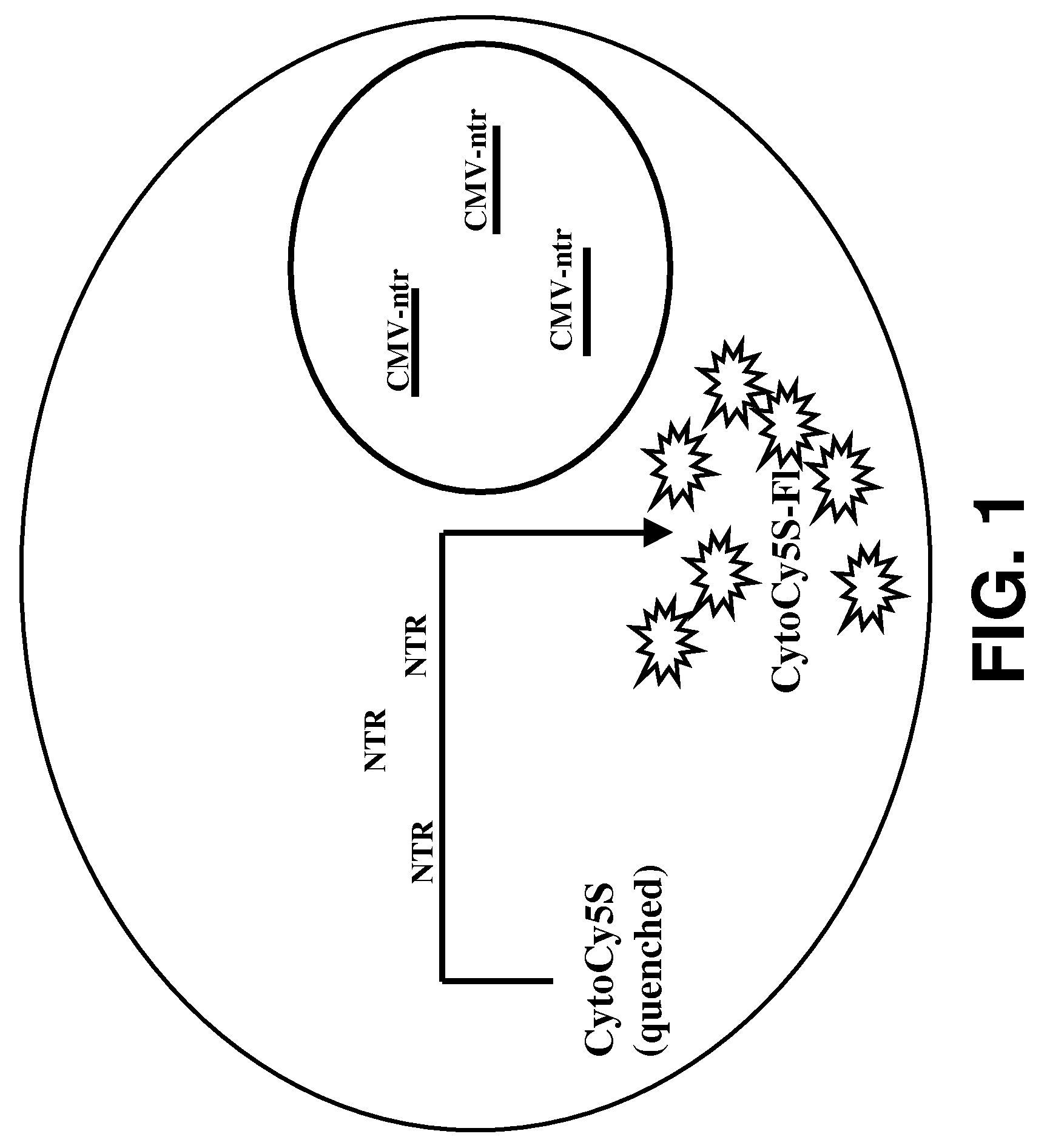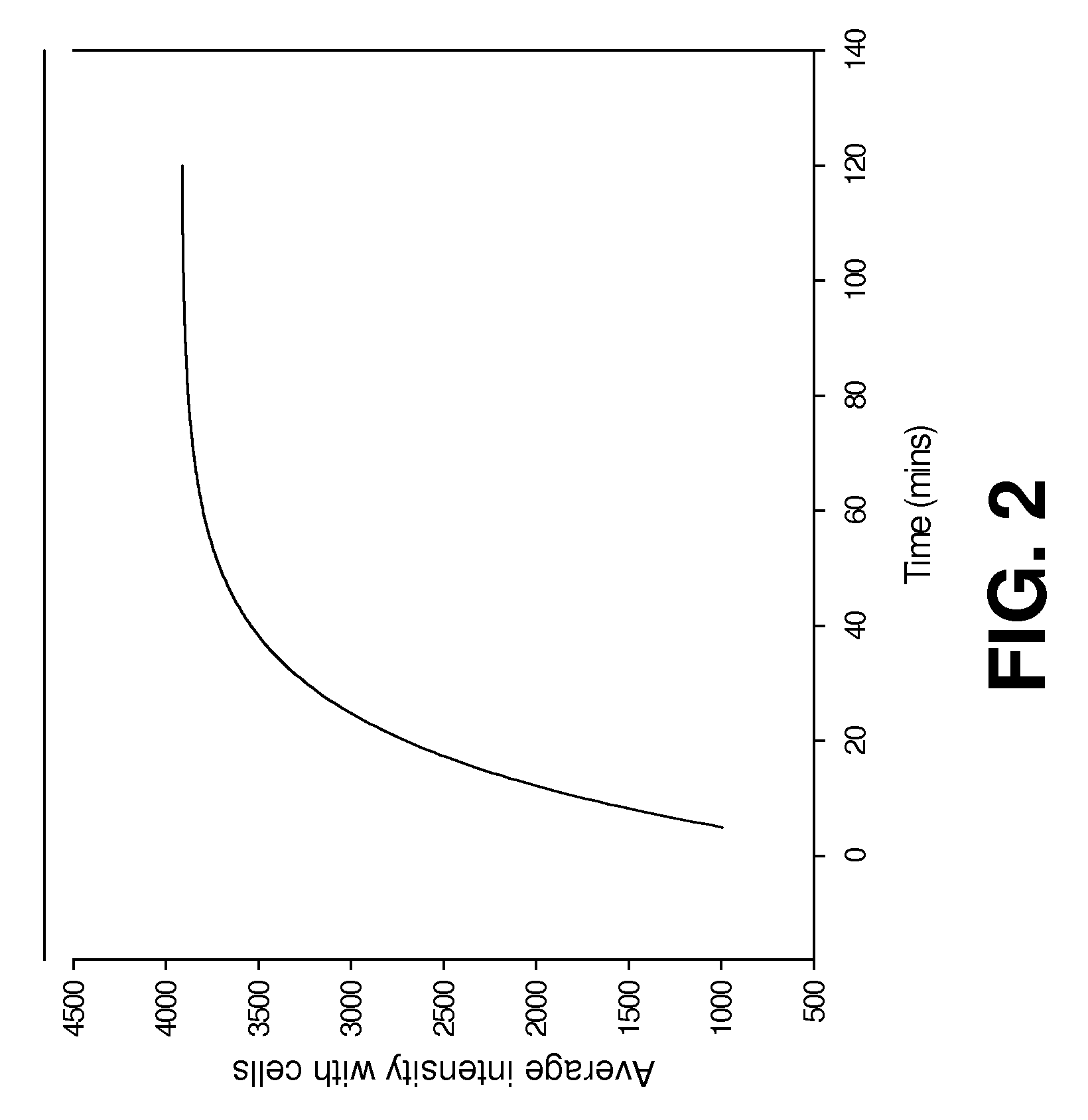In vivo optical imaging
a technology of optical imaging and in vivo, which is applied in the field of fluorescence, can solve the problems of limited penetration of light through the body, and achieve the effect of facilitating cleavag
- Summary
- Abstract
- Description
- Claims
- Application Information
AI Technical Summary
Benefits of technology
Problems solved by technology
Method used
Image
Examples
embodiments
[0029]Provided herein are methods for imaging an optically labeled target cell implanted in vivo using a reporter construct that encodes an enzyme that is not endogenous to the target cell. The disclosed methods include the steps of: (a) introducing target cell transformed with non-endogenous enzyme into a mammalian subject; (b) contacting the transformed target cell with a cell-permeable soluble fluorescent dye; and (c) observing a fluorescent signal generated by the target cell present in the mammalian subject. In some embodiments, the non-endogenous enzyme comprises a nitroreductase (e.g., NTR). In some embodiments, the methods may also include the step of tracking the fluorescent target cells in the mammalian subject over time.
Nitroreductase Gene Expression
[0030]For use as a reporter gene, the nitroreductase gene may be isolated using art-recognized methods, for example by amplification from a cDNA library by use of the polymerase chain reaction (PCR). Once isolated, the nitrore...
example 1
Transformation of the Target Cells with the NTR Gene
[0075]Human colorectal carcinoma cell (LS174T cells), 2×106 were plated in 60 mm Petri plate and allowed to attain 70% confluency. The cells were transfected with CMV-ntr using Superfect reagent (Qiagen, Valencia, Calif.) following the protocol of stable transfection recommended by the manufacturer. The transfected cells were selected and maintained under selective media. The stable cell line was named as LS174T-NTR. In vitro live cell assay, using CytoCy5S revealed that the cells were stably transfected by NTR reporter gene. LS174T transfected with NTR genes shows fluorescent signal from cells when incubated with CytoCy5S.
example 2
Substrate Selection
[0076]CytoCy5S dye (GE Healthcare) in powder form (1 mg) was dissolved in DMSO (100 μl) and further diluted in cell culture media 1:100 before adding to 2 cell lines SKOV control (SKOV-NTR−) and SKOV-NTR stably transformed (SKOV-NTR+) cells and LS174T control (LS174T-NTR−) and LS174T-NTR stably transformed (LS174T-NTR+). Both cell types were cultured in 96-well plate with 0.5 ng / well of CytoCy5S dye. Fluorescent signal emitted from the cells was confirmed using a Nikon TE2000-U fluorescent microscope and Incell 1000.
PUM
 Login to View More
Login to View More Abstract
Description
Claims
Application Information
 Login to View More
Login to View More - R&D
- Intellectual Property
- Life Sciences
- Materials
- Tech Scout
- Unparalleled Data Quality
- Higher Quality Content
- 60% Fewer Hallucinations
Browse by: Latest US Patents, China's latest patents, Technical Efficacy Thesaurus, Application Domain, Technology Topic, Popular Technical Reports.
© 2025 PatSnap. All rights reserved.Legal|Privacy policy|Modern Slavery Act Transparency Statement|Sitemap|About US| Contact US: help@patsnap.com



